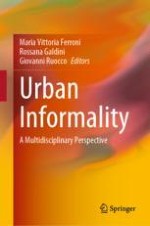2023 | OriginalPaper | Chapter
The Re-use of Assets Confiscated from Organized Crime: How to Make the Informal Formal
Author : Maria Vittoria Ferroni
Published in: Urban Informality
Publisher: Springer International Publishing
Activate our intelligent search to find suitable subject content or patents.
Select sections of text to find matching patents with Artificial Intelligence. powered by
Select sections of text to find additional relevant content using AI-assisted search. powered by
